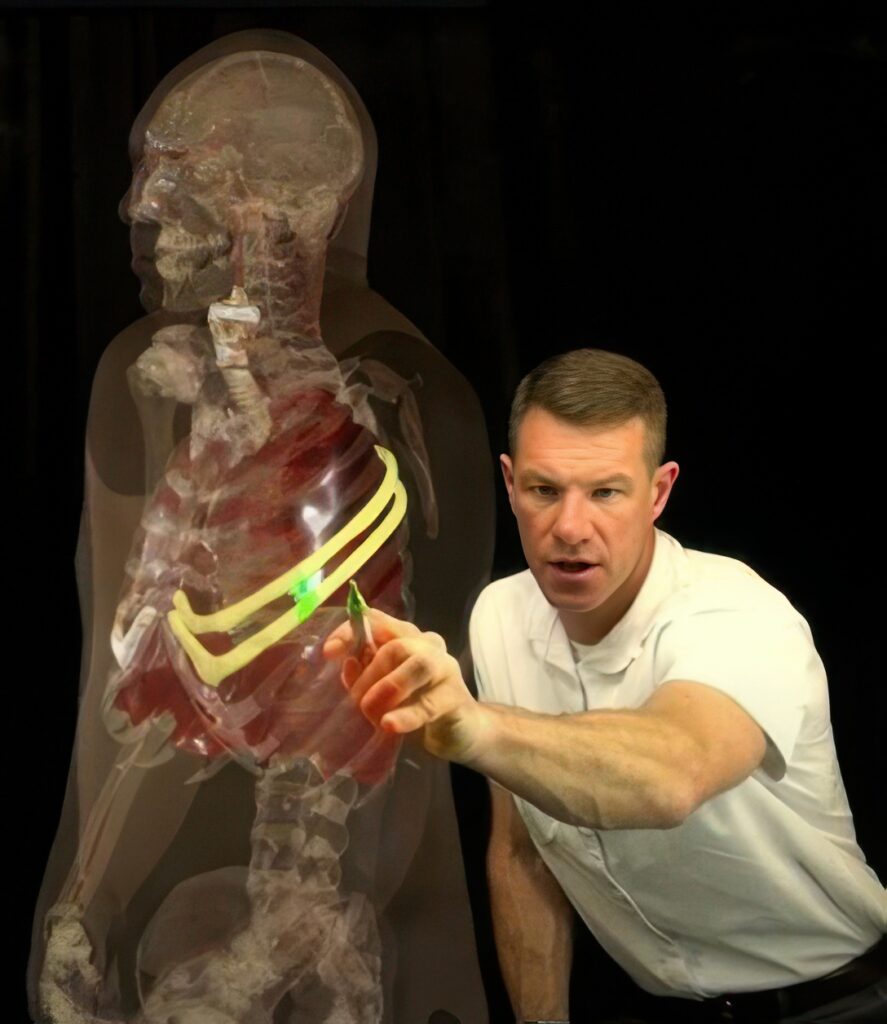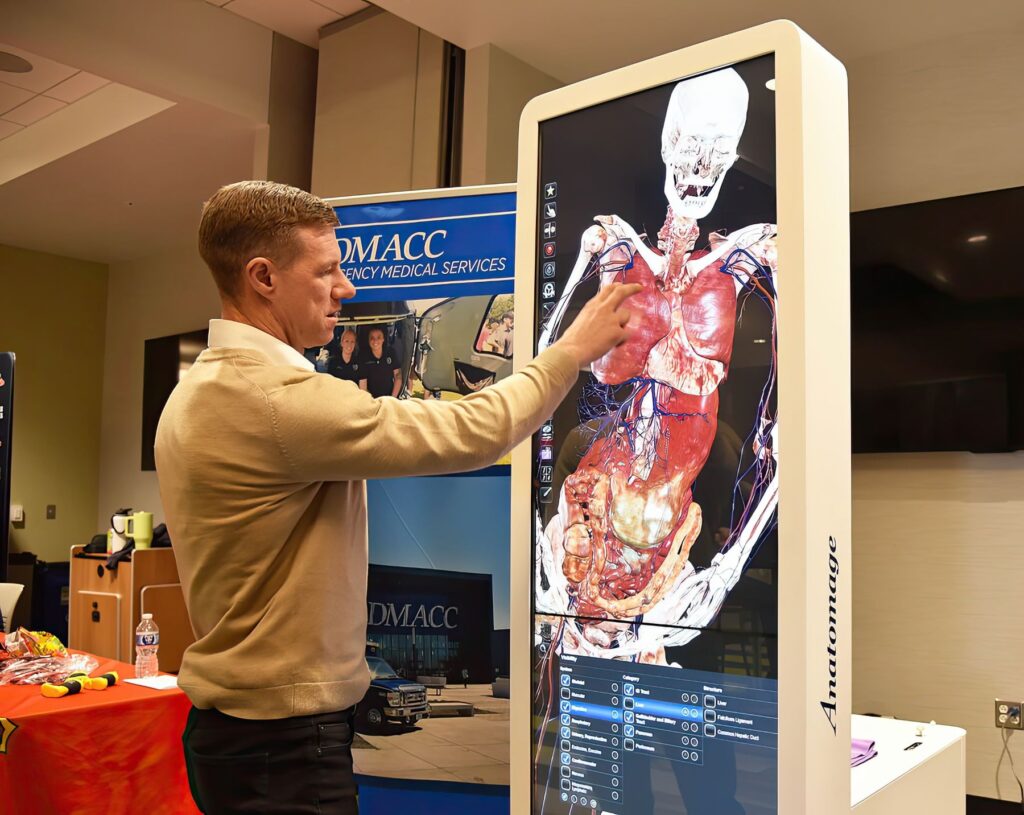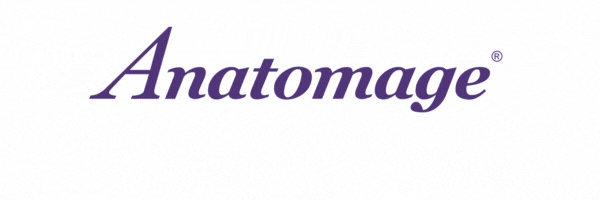Case Study: Des Moines Area Community College
Case Study:
Des Moines Area Community College
Transforming EMS Education: How A Paramedic Program Is Revolutionizing Training with the Anatomage Table
Enhancing Emergency Medical Services Training Through Advanced 3D Visualization
At Des Moines Area Community College (DMACC), training paramedics demands immersive, applied learning and exceptional visualization to prepare them for life-critical situations. Seeking a way to enhance student understanding of human anatomy and pathophysiology while increasing engagement and clinical readiness, the faculty at DMACC’s Emergency Medical Technician-Paramedic program turned to an innovative solution: the Anatomage Table.
What began as a teaching tool quickly evolved into a cornerstone of both student instruction and community partnership. The Anatomage Table helps paramedic students visualize complex pathology, strengthen clinical decision-making, and develop deeper anatomical insight — all while supporting local EMS agencies, pathologists, and high school learners across the region.
Challenge
According to Joel Otte, the EMS and Fire Science Education Coordinator at DMACC, one of the biggest challenges in paramedic education is helping students meaningfully visualize and conceptualize what’s happening inside the body. “We were already taking students to the state medical examiner’s office for autopsies, which was extremely valuable,” he explained. “But it’s a one-and-done shot—you never know what’s going to be there.”
Traditional case reviews were also limited, relying heavily on written patient care reports and verbal descriptions, often without visuals or follow-up diagnostic imaging. This made it difficult to help students connect textbook knowledge with what they’d encounter in the field — particularly in the program’s fast-paced courses where there isn’t time to build long-term conceptual understanding through repetition.
In addition, the college wanted a solution that could support both foundational anatomy instruction and advanced pathophysiology applications, all within a compressed paramedic training timeline. They needed a resource that would not only deliver clinical accuracy but also sustain student engagement at every level of the program.
Solution
The program is integrating the Anatomage Table as a cornerstone technology for EMS training, bringing 3D anatomy and clinical case studies directly into the student experience. In the classroom, the Anatomage Table is used in two major ways: as a high-level visual tool for introductory anatomy, physiology, and pathophysiology lessons, and as a clinical case resource when covering medical emergencies and trauma.
The Anatomage Table’s case library, paired with features like tissue slicing, organ isolation, and CT scan integration, allows students to build a complete picture of anatomical pathologies. Students can follow along as instructors walk through live case scenarios, and then revisit those cases independently to reinforce their understanding. “One of the best cases in there for us is the aortic aneurysm,” Otte said. “To be able to see it, and even cut it sectionally to show the separation of the tissue layers is amazing.”
The Anatomage Table’s versatility extends beyond in-person lessons. Using a lightboard projection system that displays Table content, faculty are recording a series of case studies based on patient-redacted CT scans and medic interviews. In one case, students can visualize bullet trajectory through multiple anatomical structures in 3D, analyzing where a needle thoracostomy should be placed to relieve a collapsed lung. These lessons reinforce procedural training, contributing to local paramedics’ continuing education through distance learning.

The Anatomage Table has also deepened DMACC’s partnerships with local healthcare organizations. The EMS program sometimes collaborates with local hospitals and the state medical examiner’s office to build customized case content using the Anatomage Table, expanding its community impact.
The Anatomage Table has a dual role. One is teaching, and the other is building or strengthening relationships with outside agencies. When people see it, they say ‘Wow, this is amazing.’ Even just having the Table lends credibility to us.
Joel Otte, EMS and Fire Science Education Coordinator at DMACC
Results
The Anatomage Table has transformed both the style and substance of DMACC’s paramedic program. The impact on student engagement and applied comprehension is already clear. “Without a doubt, a night-and-day difference is engagement,” Otte noted, when asked about shifts before and after the Table’s introduction. “And I believe that will translate to better comprehension as well.”

Students respond viscerally to what they see on the Anatomage Table, frequently staying long after class ends or visibly reacting to what they discover. High school visitors in healthcare occupation exploration classes routinely extend their sessions, with some staying for hours to interact with the Table.
Beyond engagement, the Anatomage Table has added to students’ clinical preparedness. The hands-on element of Table use contributes to the pathology retention necessary for differential diagnosis, equipping students with mental visuals rather than just textbook definitions. “It’s not words that I said — it’s a visual, or something that [the students] did,” Otte said. “That helps lock down those pathologies as they try to decipher what’s truly taking place with a patient.”
As Otte put it, the Anatomage Table represents “endless opportunity” — not just for teaching anatomy, but for elevating EMS education, improving procedural training, and expanding the program’s role in the broader healthcare community.
